Alfa Laval E-PowerPack Converts Waste Heat into Power
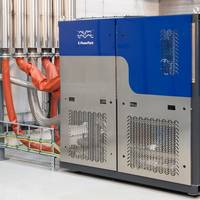
Alfa Laval's newly launched E-PowerPack converts waste heat into power, enabling energy savings and compliance.Waste heat is a readily available but under-utilized energy source on board. Heat in the engine exhaust gas accounts for 50% of the energy from combusted fuel, and there is additional heat to recover from steam and liquids. Alfa Laval's new E PowerPack puts all these heat sources to work for savings and compliance with sustainability requirements.The E-PowerPack uses Organic Rankine Cycle (ORC) technology to turn waste heat into clean electrical power.
Portable Emission Analyzer Certified for Marine
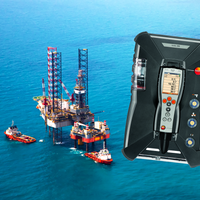
A portable analyzer designed for monitoring emissions from ships is now available for sale or rent from Ashtead Technology. “With increasing global efforts to limit ship emissions, and with new regulations to reduce sulphur dioxide emissions coming into force on January 1, 2020, the addition of the Testo 350 MARITIME instrument is perfectly timed,” says Ashtead’s Environmental Sales Manager, Josh Thomas.The Testo 350 MARITIME is the world’s first portable analyzer certified for…
NYK Takes Delivery of New Coal Carrier
Japanese shipping company Nippon Yusen Kabushiki Kaisha (NYK) has taken delivery of a coal carrier equipped with a binary cycle power-generation system that utilizes engine exhaust heat.The new coal carrier Pirika Mosiri Maru that NYK will own and operate to transport coal for Hokkaido Electric Power(HEPCO), was delivered yesterday (January 23) at Oshima Shipbuilding Co. Ltd. in Saikai city, Nagasaki prefecture, and a delivery ceremony was held on the same day.The event was attended by Akihiko Mayumi, president and director of HEPCO and NYK president Tadaaki Naito, among others.Pirika Mosiri Maru, as the third generation ship, will take on the mission that has been handed down from the first-generation vessel named Sapporo Maru which was delivered in 1984 as HEPCO’s first coal ship…
The Digital Future of Exhaust Gas Temperature Sensors
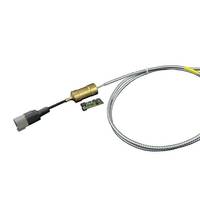
CMR Group’s chief technical officer, Patrice Flot, considers the current approach to sensing exhaust gas temperature (EGT) on high horsepower engine platforms and the capabilities provided by new digital technology. An EGT sensor measures the temperature of the engine exhaust gas to prevent damage to critical components such as the after treatment system, turbines and cylinder head exhaust valves. It can also be used inside the combustion chambers where hot gases are generated.
Suezmax Newbuilds Feature MAN Engines with EGR
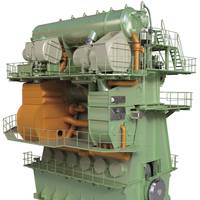
Hyundai’s Ship Building Division (HHI-SBD) has finalized a contract for two Suezmax tankers for Turkish shipowner, Ditas Shipping. The 158,000-cubic-meter crude-oil tankers will each be powered by individual MAN B&W 6G70ME-C9.5 two-stroke main-engines that feature integrated Exhaust Gas Recirculation (EGR) systems. While there are already IMO Tier III-compliant vessels with EGR systems in service, the Suezmax newbuildings will be the first vessels with keel-laying after January 1…
Imabari Installs SOx Scrubber onto Bulk Carrier

Imabari Shipbuilding Co., Ltd. announced it has become the first shipyard in Japan to successfully install a SOx scrubber onto bulk carrier. The SOx scrubber, manufactured by Fuji Electric Co., Ltd., has been installed for a domestic ship owner aboard the 84,000M.T.D/W bulk carrier M/V Nadeshiko. The installation was completed on March 24, 2016. This installation is the joint research support project together with Class NK called “Main Engine Exhaust Gas Cleaning System (EGCS) installation on operating newbuilding vessel, and closed loop practicing test”.
Hybrid Turbocharger Uses Calnetix Tech
The MET Hybrid Turbocharger from Mitsubishi Heavy Industries Marine Machinery & Engine Co. Ltd. (MHI-MME) uses a motor generator system and power electronics developed by Calnetix Technologies. The Japan Machinery Foundation presented its President’s Award to MHI-MME for the new-technology turbocharger in the 36th Energy Conserving Machinery competition last month. Calnetix’s patented Magnaforce high-speed permanent magnet motor generator is housed within the turbocharger. By diverting a small portion of the engine exhaust gas that would normally be dedicated entirely to the turbocharger, the new MET Hybrid is able to provide all the auxiliary electric power required for the ship, eliminating the need for running a separate diesel generator.
Next Gen Tankers Delivered to Concordia Maritime
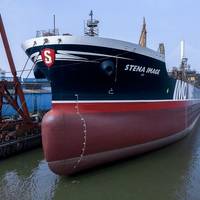
Concordia Maritime’s first chemical and product tanker based on the IMOIIMAX concept, the Stena Image, was delivered from the Chinese shipyard GSI (Guangzhou Shipbuilding International) in Guangzhou. The vessel, a 50,000 dwt MR tanker, is equipped with 18 tanks of the same size, each with a capacity of 3,000 m3, able to load vegetable oils and chemicals as well as petroleum products. The technical design has enabled fuel consumption, when sailing at service speed, to be reduced by 10-20% compared with other vessels of the same size.
DSME Returns for More Dual-Fuel Engines

MAN Diesel & Turbo received an order for four MAN B&W 5G70ME-GI engines in connection with Daewoo Shipbuilding & Marine Engineering Co.,Ltd. (DSME) agreeing a deal with the BW Group to build two LNG carriers. The technical engine specification complies with IMO Tier II, with options to include remedies for Tier III compliance at a later stage. The 173,400 cu. m. vessels are scheduled for delivery in late 2017/early 2018 and will be built at DSME’s Okpo shipyard in Geoje, Korea. The deal represents the second LNG ME-GI contract for DSME after a previous order signed in 2012.
DSME Returns for More Dual-Fuel Engines
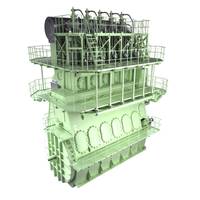
Four two-stroke ME-GI engines ordered for two LNGCs. MAN Diesel & Turbo has received an order for four MAN B&W 5G70ME-GI engines in connection with Daewoo Shipbuilding & Marine Engineering Co.,Ltd. (DSME) agreeing a deal with the BW Group to build two LNG carriers. The technical engine specification complies with IMO Tier II, with options to include remedies for Tier III compliance at a later stage. The 173,400 m3 vessels are scheduled for delivery in late 2017/early 2018 and will be built at DSME’s Okpo shipyard in Geoje, Korea.
MAN-Powered Cargo Vessel Meets Tier III
Classification society awards SCR system emissions certificate. MAN Diesel & Turbo has been awarded a Tier III - compatibility certificate by the DNV- GL classification society for MAN 8L21/31 four- stroke engine aboard a DFDS Seaways ship with a retrofitted SCR (Selective Catalytic Reduction) system. While the engine alone meets IMO Tier II emission criteria, the SCR system for NOx reduction raises the whole system to the standard demanded by IMO Tier III rules. The vessel in question, the ‘Petunia Seaways’ is a cargo ship that sails a regular North Sea route between Gothenburg, and Immingham, respectively Ghent for DFDS Seaways. Its SCR system greatly reduces the level of nitrogen oxides (NOx) from the engine’s exhaust gas.
MAN Diesel & Turbo and the Tier-III Age
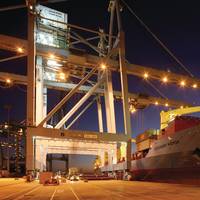
The introduction of the electronically controlled camshaft-less low speed diesel engines (ME-range) are a milestone in diesel technology, a milestone that deserves a place in history similar to Rudolf Diesel’s first engine in Augsburg for the 1912 motor vessel Selandia, the introduction of turbocharging on two-stroke diesels in 1954, and the first SCR (Selective Catalytic NOx Reduction) systems on ships in 1989. The IMO Tier III NOx regulations that will come into force in 2016…
LNG Bunkering: SSS Chooses Suitable Ships for Project
The European consortium for Short Sea Shipping (SSS) chooses 8 ships to provide an insight into feasibility of LNG as a bunker fuel. The selection of ships took place in close co-operation between the SSS consortium partners. Both new designs, new buildings as well as existing ships of Wagenborg Shipping, Damen Shipyards Bergum, Meyer Werft & Conoship International were selected. The sizes of these ships vary in length from about 80 meter up to 160 meter and in tonnage from about 2.500 until 15.000 dwt. Research for these ships starts with determination of the cost for implementation and use of LNG systems and then the results of this research will be compared against the use of scrubber technology and low sulphur marine diesel to curb engine exhaust gas emissions.
Multi-stream Scrubber for Wilhelmsen ASA Vessel
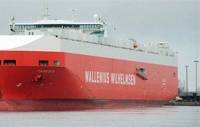
Wärtsilä Hamworthy, announce an agreement with Wilh. Wilhelmsen ASA, the global rolling cargo operator, to retrofit their vessel MV Tamesis with a Krystallon Exhaust Gas Cleaning System (EGCS). The systems will remove sulphur and particulates from the exhaust gasses of the vessel's main and auxiliary engines. The multi-stream scrubber system will be the world's largest in order to manage the exhaust gasses produced by the 38,486dwt Mark IV RoRo vessel's combined engine power of 28,000kW.
BWT Systems, Scrubbers, Spur Pump Market
World Pumps draws attention to the latest forecasts in McIlvaine Co’s Pumps: World Markets report, which forecasts that East Asia will account for more than 33% of the market in 2017, driven by new infrastructure and heavy industrial spending. McIlvaine believes that the ocean will play an increasing role in the pump market. New regulations for ballast water treatment and scrubbing of vessel stack emissions will boost the sales of pumps for existing and new vessels, while expanded production of oil and gas from subsea sources will require many large and expensive pumps. The growth in NAFTA will be led by the non-conventional oil and gas sector. Expanding production of gas and oil from shale will generate substantial demand for pumps in the region.
First Tier-III-Compliant, Two-Stroke Engine Unveiled in Japan

The engine, an MAN B&W 6S46MC-C8 type capable of an output of almost 7 MW, was constructed in autumn 2010 by Hitachi Zosen Corporation at its Ariake works in southern Japan. The engine is bound for a general cargo carrier, to be built at the Nakai shipyard and scheduled to enter active service later this year. The vessel was ordered by Japanese customer, BOT Lease Co. Ltd., and is operated by Nissho Shipping Co. Ltd. The first engine-start took place in January 2011. In connection with this…
Algoma Invests in Great Lakes Shipping
Algoma Central Corporation expects to invest close to $400m in Great Lakes shipping as it takes bold steps for the future, Algoma President and Chief Executive Officer Greg Wight said during his keynote address at the Top Hat ceremony marking the 182nd opening of the Welland Canal. “This level of commitment to this industry is unprecedented,” Mr. Wight said. Algoma’s fleet renewal program is starting with the purchase of five new state-of-the-art Equinox Class vessels, with the hope to expand this order. The new Equinox Class was developed in St. Catharines, Ontario by a team of designers at Algoma’s downtown headquarters in partnership with engineers from around the world. Equinox Class ships are the next generation of bulk carriers on the Great Lakes.
The Doctor is "in"
The responsibility of melding, developing and profitably leading one of the world's most prolific high-technology marine companies is, to say the least, a daunting task. Assuming the post with no marine industry experience would seemingly make the job all the more difficult. But Dr. Saul Lanyado enters his position as the new president of the Rolls-Royce Marine division armed with years of engineering and business success and savvy. Maritime Reporter recently sat with Dr. Lanyado in his Buckingham Gate, London office to discuss the company's current endeavors and future developments. At the outset of a discussion regarding Rolls-Royce's marine business, it is immediately evident the direction in which one of the world's new leading players in marine propulsion is heading.
Playing by the (new) Rules
The increased focused on emission of all types is hardly news to shipowners and marine propulsion suppliers. For decades, entities from individual groups to international policymakers continuously changed the manner in ships and boats are operated. But today perhaps more than ever before, scrutiny of emissions from ships and boats has never been more intense, or as critical in the development, design and marketing of marine propulsion equipment. Diesel engine manufacturers, for example, are spending a good percentage of their sizable R&D budgets dedicated to ensuring their engines are not only compliant with ever-tightening emissions rules and regulations, but to ensure that these same "new" engines operate as reliably and efficiently under the new operating realm.





